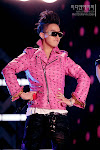1.)
a.)PERSONAL
Data structure is the way to store some data in a given situation and in an activity. This are the informations that is so important. It can be saved or deleted. A storage of everything you wanted in some aspects of information. Some kind of business affairs, communication, telecommunication or between the costumer and a businessman. Like in some kind of data structure, a data that is first to enter, it also the first to be entertained or to be push out; a data that is last to enter is also last to be entertained. Empty bull can be true if the structure is empty. Size is been determine if there are datas in it. It is use in some programming operations going on. A data that is stored is immediately arrange of its kind.
b.)A data structure in computer science is a way of storing data in a computer so that it can be used efficiently. It is an organization of mathematical and logical concepts of data. Often a carefully chosen data structure will allow the most efficient algorithm to be used. The choice of the data structure often begins from the choice of an abstract data type. A well-designed data structure allows a variety of critical operations to be performed, using as few resources, both execution time and memory space, as possible. Data structures are implemented by a programming language as data types and the references and operations they provide.=>http://en.wikipedia.org/wiki/Data_structure
c.) A collection of data components that are constructed in a regular and characteristic way.=>http://www.answers.com/topic/data-structure
d.)A data structure is a group of data elements grouped together under one name. These data elements, known as members, can have different types and different lengths. a data structure creates a new type: Once a data structure is declared, a new type with the identifier specified as structure_name is created and can be used in the rest of the program as if it was any other type. =>http://www.cplusplus.com/doc/tutorial/structures
e.)The SG_OBJ data structure accommodates all data in an object, a part, or a link in a universal format that is used within the SansGUI environment and among SansGUI, simulator, and all user overriding functions. All the data in SG_OBJ are stored in an array of SG_VALU Data Structures. The two data structures form the universal SansGUI Data Object Format for data communication among program modules.
=>http://www.protodesign-inc.com/doc/SansGUI/sg_obj_data_structure.
f.)Data structures help you organize and process your data. There are many different ways of implementing them depending on available resources and whims of the programmer.The type of data structure you want to use will often be determined by how quickly you need to be able to do certain things to the data and how often, with compromises sometimes made for hardware or network restrictions.=>http://en.wikiversity.org/wiki/Data_structures
g.) A data structure, method, and computer program provide a linked list in a first dimension and a plurality of linked lists in a second dimension. In use, a linked list in a first dimension is provided. Further, the linked list in the first dimension includes a plurality of nodes. Additionally, each node includes a head pointer and a tail pointer. In addition, a plurality of linked lists in a second dimension is provided. Furthermore, the tail pointer of one of the nodes in the linked list in the first dimension points to a first node in one of the linked lists in the second dimension.
=>http://www.priorartdatabase.com/IPCOM/000171483/
h.) An organization of information, usually in memory, for better algorithm efficiency, such as queue, stack, linked list, heap, dictionary, and tree, or conceptual unity, such as the name and address of a person. It may include redundant information, such as length of the list or number of nodes in a subtree.
=>http://www.itl.nist.gov/div897/sqg/dads/HTML/datastructur.html
i.)Most data structures have associated algorithms to perform operations, such as search, insert, or balance, that maintain the properties of the data structure.
A data structure with an associated thread or process that performs internal operations to give the external behavior of another, usually more general, data structure.
j.) Computers can store and process vast amounts of data. Formal data structures enable a programmer to mentally structure large amounts of data into conceptually manageable relationships.Sometimes we use data structures to allow us to do more: for example, to accomplish fast searching or sorting of data. Other times, we use data structures so that we can do less: for example, the concept of the stack is a limited form of a more general data structure. These limitations provide us with guarantees that allow us to reason about our programs more easily. Data structures also provide guarantees about algorithmic complexity — choosing an appropriate data structure for a job is crucial for writing good software.
2.)
a.)HASH TABLE DATA STRUCTURE
Or a hash map, is a data structure that associates keys with values.The primary operation that hash functions support efficiently is a lookup: given a key (e.g., a person's name), find the corresponding value (e.g., that person's telephone number). It works by transforming the key using a hash function into a hash, a number that is used as an index in an array to locate the desired location ("bucket") where the values should be. Hash tables support the efficient lookup, insertion and deletion of elements in constant time on average (O(1)) that does not vary with the number of elements stored in the table; although may vary somewhat depending on how full the table is. It works by transforming the key using a hash function into a hash, a number that is used as an index in an array to locate the desired location ("bucket") where the values should be. The number is normally converted into the index by taking a modulo operation, or sometimes bit masking is used where the array size is a power of two. The optimal hash function for any given use of a hash table can vary widely, however, depending on the nature of the key. Typical operations on a hash table include insertion, deletion and lookup (although some hash tables are precalculated so that no insertions or deletions, only lookups are done on a live system). These operations are all performed in amortized constant time, which makes maintaining and accessing a huge hash table very efficient.It is also possible to create a hash table statically where, for example, there is a fairly limited fixed set of input values - such as the values representable by a single byte (or possibly two bytes ) from which an index can be constructed directly (see section below on creating hash tables). The hash table can also be used simultaneously for tests of validity on the values that are disallowed. With a good hash function, a hash table can typically contain about 70%–80% as many elements as it does table slots and still perform well. Depending on the collision resolution mechanism, performance can begin to suffer either gradually or dramatically as more elements are added.
b.)ROPE DATA STRUCTURE
It represents an immutable sequence of characters. A rope's length is simply the number of characters in the sequence. Most string representations store all their characters contiguously in memory. The defining characteristic of a rope is that it does away with this restriction, instead allowing fragments of the rope to reside noncontiguously and joining them using concatenation nodes. This design allows concatenation to run asymptotically faster than for Java Strings. The String version of concatenation requires strings you want to join to be copied to a new location, which is an O(n) operation. The rope counterpart simply creates a new concatenation node, which is an O(1) operation. (If you're unfamiliar with big-O notation, see Resources for a link to explanatory material.) Rope implementations also often defer evaluation of large substring operations by introducing a substring node. Use of a substring node reduces the time for extracting a substring of length n from O(n) to O(log n), and often to O(1). A flat rope — a rope with no concatenation or substring nodes — has a depth of 1. The depth of concatenation and substring ropes is one more than the depth of the deepest node they enclose.
Ropes have two overheads that contiguous-character string representations do not. The first is that a superstructure of substring and concatenation nodes must be traversed to reach a specified character. Furthermore, this tree superstructure must be kept as balanced as possible to minimize traversal times, implying that ropes need occasional rebalancing to keep read performance good. Even when ropes are well balanced, obtaining the character at a specified position is an O(log n) operation, where n is the number of concatenation and substring nodes the rope comprises. (For convenience, the rope's length can be substituted for n, because the length is always greater than the number of substring and concatenation nodes in the rope.)
Rope rebalancing is fast, and the determination of when to rebalance can be made automatically, for example by comparing the rope's length and depth. And, in most data-processing routines, sequential access to a rope's characters is what's required, in which case a rope iterator can provide amortized O(1) access speed. Although ropes can serve as a general-purpose replacement for contiguous-memory representations of strings, only applications that extensively modify large strings will see a significant performance improvement. Perhaps it is not surprising, then, that one of the earliest applications of ropes was to represent documents in a text editor. Not only can text insertions and deletions be performed in near-constant time for extremely large documents, but ropes' immutability makes implementation of an undo stack trivial: simply store a reference to the previous rope with every change.
c.)SCENE GRAPH DATA STRUCTURE
A scene graph is a general data structure commonly used by vector-based graphics editing applications and modern computer games. The scene graph is a structure that arranges the logical and often (but not necessarily) spatial representation of a graphical scene. The definition of a scene graph is fuzzy because programmers who implement scene graphs in applications and in particular the games industry take the basic principles and adapt these to suit particular applications. This means there is no hard-and-fast rule as to what a scene graph should be.
A scene graph is a collection of nodes in a graph or tree structure. A node may have many children but often only a single parent, with the effect of a parent apparent to all its child nodes; an operation applied to a group automatically propagates its effect to all of its members. In many programs, associating a geometrical transformation matrix (see also transformation and matrix) at each group level and concatenating such matrices together is an efficient and natural way to process such operations. A common feature, for instance, is the ability to group related shapes/objects into a compound object which can then be moved, transformed, selected, etc. as easily as a single object. Scene graphs are useful for modern games using 3D graphics and increasingly large worlds or levels. In such applications, nodes in a scene graph (generally) represent entities or objects in the scene.
The simplest form of scene graph uses an array or linked list data structure, and displaying its shapes is simply a matter of linearly iterating the nodes one by one. Other common operations, such as checking to see which shape intersects the mouse pointer (e.g., in a GUI-based applications) are also done via linear searches.In order to apply an operation is needed based upon what node is currently being considered. Traversals are the key to the power of applying operations to scene graphs. A traversal generally consists of starting at some arbitrary node (often the root of the scene graph), applying the operation(s) (often the updating and rendering operations are applied one after the other), and recursively moving down the scene graph(tree) to the child nodes, until a leaf node is reached. At this point many scene graphs then traverse back up the tree, possibly applying a similar operation. Rendering is an example: While recursively traversing down the scene graph hierarchy the operation(s) applies a PreRender operation. Once reaching a leaf node, it begins traversing back up the tree, applying a PostRender operation. This nicely allows certain nodes to push a state for child nodes, and to pop the state afterwards.
Some scene graph operations are actually more efficient when nodes are traversed in a different order - this is where some systems implement scene graph rebuilding to reorder the scene graph into an easier to parse format or tree.
Friday, March 6, 2009
Subscribe to:
Posts (Atom)





.jpg)

